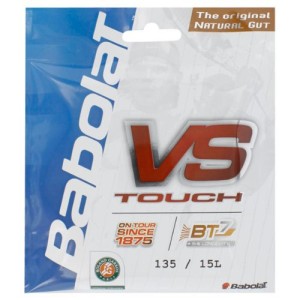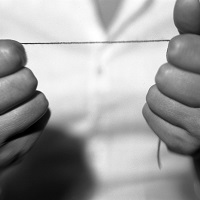 Outdoor tennis players often follow the pros with their string choices. However, this only makes sense if the pros are playing in same climate. For players in Calgary where it is often cool, it makes no sense to use the same string as a pro appearing in 40+ degree heat at the Australian Open.
Outdoor tennis players often follow the pros with their string choices. However, this only makes sense if the pros are playing in same climate. For players in Calgary where it is often cool, it makes no sense to use the same string as a pro appearing in 40+ degree heat at the Australian Open.
As we have discussed in previous articles, polyester tennis string (use by many pros) is probably the worst possible choice for outdoor tennis players in Calgary. Given our climate, there are really only about six weeks during which it is warm enough outside for poly strings to make any sense at all. For most of the outdoor tennis season, the temperatures are too cool for polyester resulting in unacceptably — often unplayably — stiff string beds.
Natural gut, as every tennis geek knows, lies at the other end of spectrum. As an organic product, it is capable of stretching and snapping back under a wide range of conditions. Indeed, natural gut comes from the intestines of cows where it is constantly expanding and contracting in order to push food through the animal’s digestive system. So unlike plastic, which stretches and sags in a short period of time, natural gut is very good at returning to its original shape.
Downside to Natural Gut
The downsides to natural gut, of course, are price and durability. Like most good things in life, natural gut is not cheap. It costs about twice as much to string a tennis racquet with natural gut as it does with plastic. This initial expense comes as a bit of a shock to many players who don’t understand the benefits of using it. They don’t understand that it costs twice as much but it retains its elasticity for more than twice as long. They don’t understand that it performs better at low temperatures than plastics and polys. All they see is the price and that frightens them.
The knock against natural gut is its durability. In actual fact, natural gut lasts about as long as synthetic gut, but few players realize this. The perception is that it has a short life. Certainly, when it is compared with polyester strings, there is no question that racquets strung with natural gut must be strung more often. But to say it has a short life is probably unfair because for most players who play with synthetic gut, the durability will be about the same.
Moisture Issues with Natural Gut
Moisture is another issue often raised as a criticism of natural gut. Players who used it 30 years ago will remember mold and mildew forming on racquets that were strung with natural gut and put away wet. They may also remember having to apply wax to their strings in order to protect them from moisture.
Fortunately, moisture is not an issue in Calgary. Humidity levels are extremely low here for most of the outdoor season. Moreover, natural gut strings are now treated with coatings and preservatives that obviate the whole mold/mildew issue. In fact, in spite of stringing several thousand racquets over the past decade, our stringers have not seen a single case of racquet mold in Calgary.
Best Overall Tennis String for Calgary
It is for these reasons that we have concluded that natural gut is probably the best overall string for Calgary’s outdoor tennis players. While it may seem pricey, there is no question that it offers the best value for the greatest number of players. In addition, there are some well-known health benefits that we don’t have time to go into here, but that also make natural gut an excellent choice for weekend warriors and other recreational athletes.
Outdoor tennis players who choose natural gut in Calgary will enjoy better overall string performance, regardless of our rapidly changing weather. They will also enjoy a much higher level of comfort than players who choose polys and other plastic tennis strings.
TEST PREPARATION
The following questions may appear on tests related to this article. Use them to test your reading comprehension and prepare for the CERTIFIED EXPERTS TEST – RACQUET SERVICE.


 Outdoor tennis players often follow the pros with their string choices. However, this only makes sense if the pros are playing in same climate. For players in Calgary where it is often cool, it makes no sense to use the same string as a pro appearing in 40+ degree heat at the Australian Open.
Outdoor tennis players often follow the pros with their string choices. However, this only makes sense if the pros are playing in same climate. For players in Calgary where it is often cool, it makes no sense to use the same string as a pro appearing in 40+ degree heat at the Australian Open.